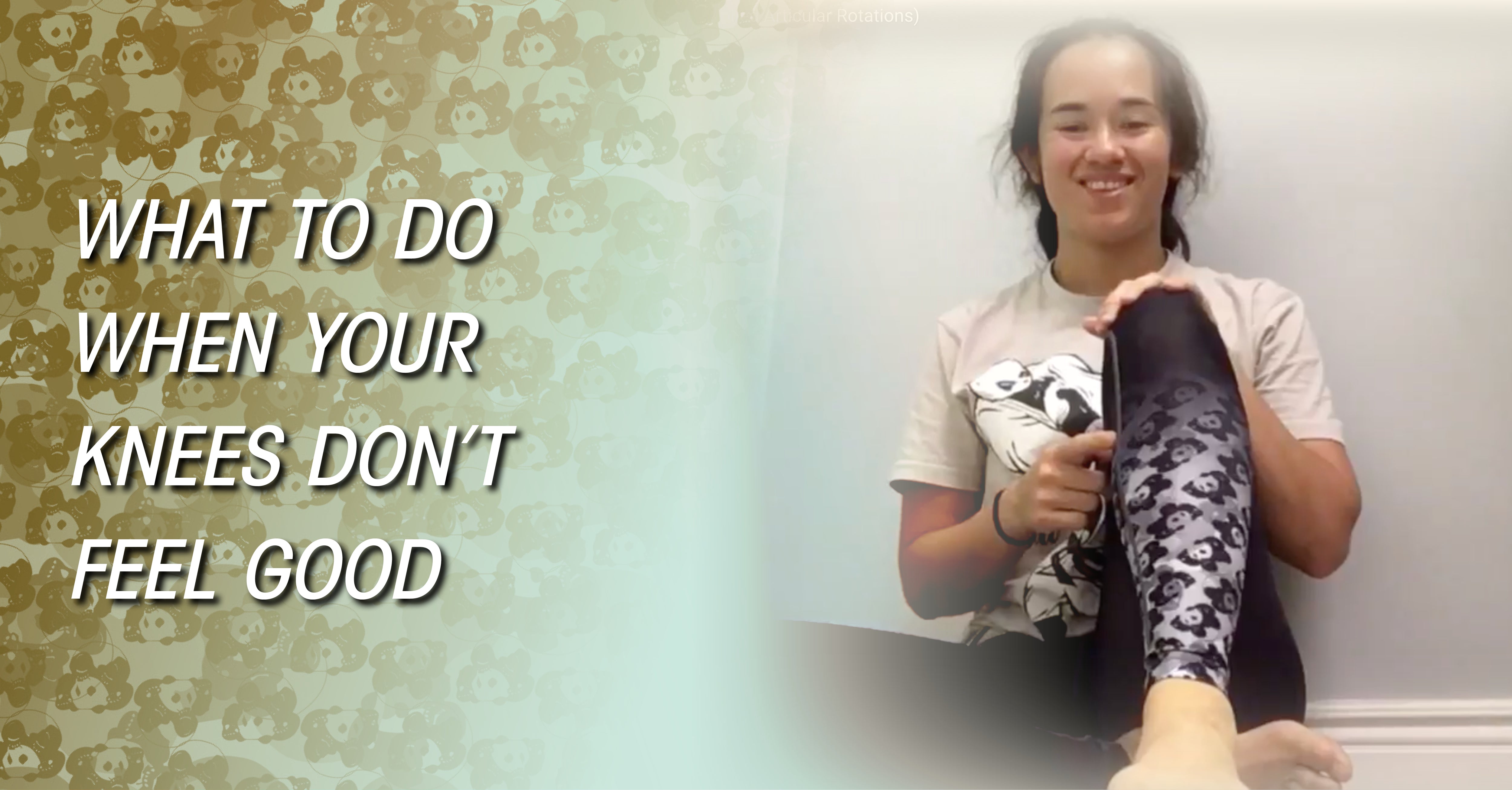
What to Do When Your Knees Don’t Feel Good

Samantha Faulhaber, FRCms, FRAs, is a Brazilian Jiu-Jitsu black belt and mobility specialist certified by Functional Anatomy Seminars.
See a professional for recommendations that are specific to you and your needs. These recommendations are not meant to replace the advice of a medical professional. Do all movements outside of any pain and seek help to make sure your knees are healthy enough to try any of these movements.
Do your knees feel good?
A healthy knee can do all of these things without pain:
- Bend (flex)
- Straighten (extend)
- Has a mobile kneecap (also known as your patella)
- Rotation (via tibial rotation)
Let’s break down each movement and a few strategies to follow if you find any issues.
Start in a comfortable position. This can be supported, like in a chair or leaning against something, or unsupported. Comfort matters because it means you’ll be less distracted.
Flexion:
Bend your knee slowly, as far as you can get it to your butt.
Extension:
Straighten your knee slowly.
Rotation:
Keep your thigh still and rotate just your shin bone back and forth slowly.
Pain-free patella:
Lightly mush against the outer perimeter, nudging just enough towards the center to see if you get any movement and/or feel any discomfort as you do so. Since you cannot move your patella independently, focus on massaging areas around it that feel good and seek professional help if you don’t see any improvement.
Did you experience discomfort during any of the movements? If so, note where and which direction you were moving in at the time, and then try the following two strategies to improve the way your knee feels. Move much slower than you think you should. If anything feels worse, stop, and see a professional.
Strategy 1: pain-free movement
- Slowly and steadily move back and forth but do not move into any ranges that feel uncomfortable.
- Repeat 5-10 times.
- See if you’ve improved.
Improvement includes:
- More pain-free range of motion.
- Reduced pain if you still have some.
- Discomfort in a clearly different place than before.
If you encounter any of these improvements, try repeating Strategy 1. Once you stop seeing improvement or get tired, rest.
Strategy 2: Isometrics
Isometrics mean holding tension while staying still. Once you’ve found your starting point (#3), you will not actually be moving anything, just creating low-level force. Read the whole list before beginning and you’ll be better off. Just like with IKEA furniture directions.
- Find the discomfort.
- Freeze.
- Rewind the movement until you feel rock solid or as close to rock solid as you can.
- Lightly push against something solid for 10-30 seconds in the opposite direction of the discomfort. Hold steady.
- Flexion: If you found it hurts to bend, lightly try to lift something with your foot too heavy to actually lift.
- Extension: If straightening creates the issue, hook your heel into something (can be the floor) and lightly pull your heel towards your butt.
- Rotation: If rotating the shin one way didn’t feel good, push into something by rotating in the opposite direction.
- If #4 feels funny at all, use a lighter amount of force.
- If #5 still feels funny, go even lighter, or find a different angle for your leg that feels better.
- Relax.
- Repeat.
- Breathe the whole time.
- Stop if you get bored or tired.
To progress, try pushing or pulling for a longer amount of time, then by increasing the amount of pressure you’re using. Follow the directions every time.
If you stayed in pain free ranges the whole time, followed all directions carefully, and nothing changed, please see a professional because something is really up.
How to stay feeling good
Maintain your healthy knees by moving them frequently. Here is a set of movements to do every day as part of your joint maintenance routine, and a full set of joint movements that only takes ten minutes.
Knee CARs
Full Body CARs
Your body is already resilient, adaptive, and intelligent. Bringing things into balance can be as simple as learning how to listen to yourself and respecting what you find. This is a set of guidelines to help bring you back from discomfort, but I recommend working with a strength and conditioning coach to increase the resiliency of all your pain-free ranges. Stick to ranges of motion that you actively own and don’t hurt and your results will blow up in a good way.
Other articles:
Quick links
Contact us
About us
Quality BJJ gear at fair prices, available all year. Founded in 2012 to provide an alternative to high-cost, limited edition gis. Dive into the BJJ lifestyle with us—join the Panda Nation!"
